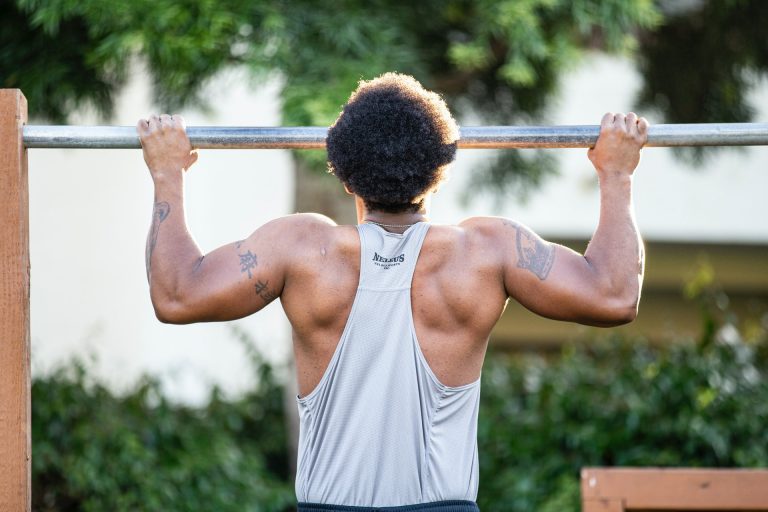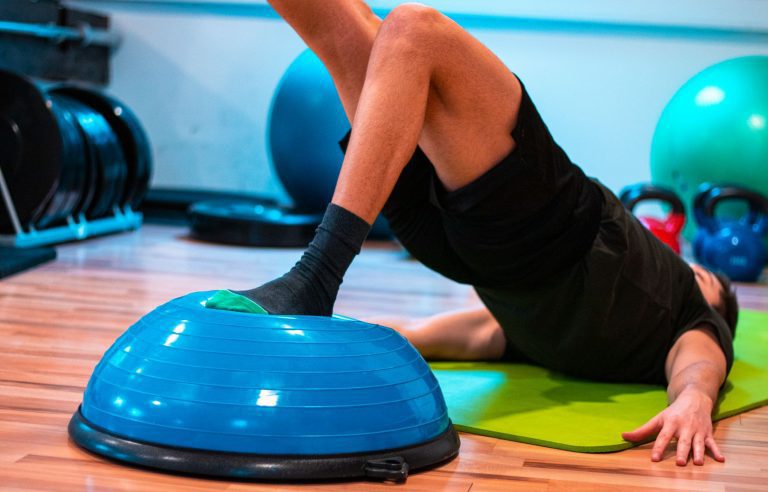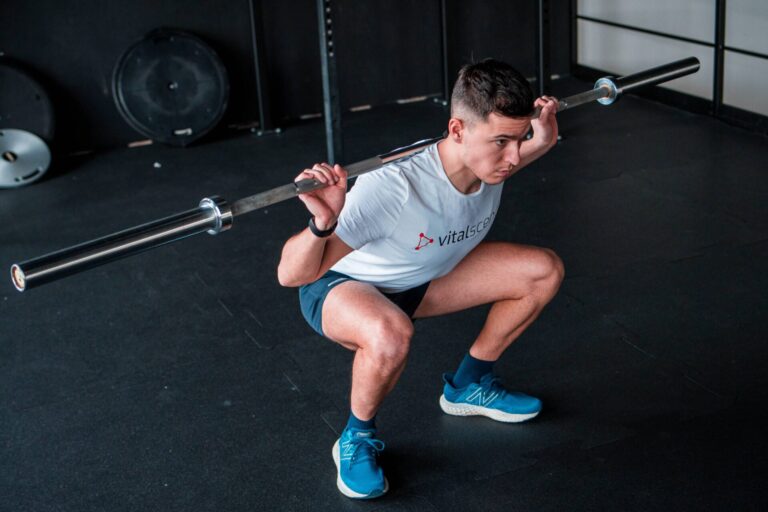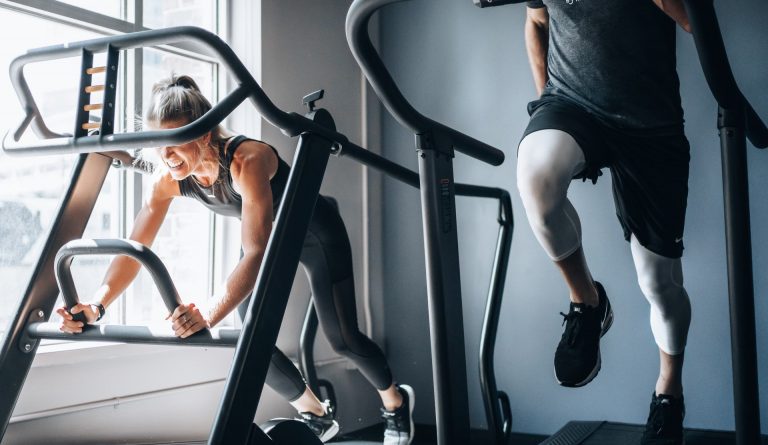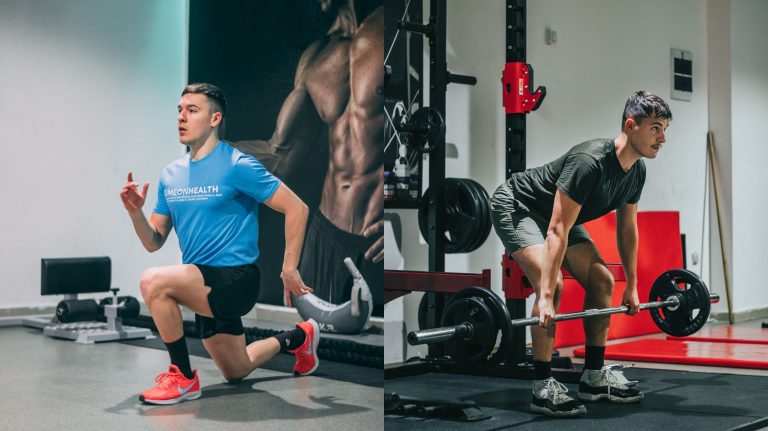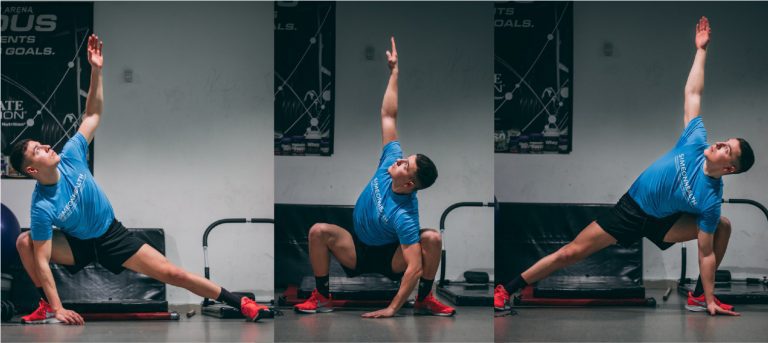Compound vs Isolation Training: Muscle Growth, Rehab, Strength & Imbalances
One of the hottest fitness debates amongst gym bros is compound vs isolation training, which one is better? Is performing full-body multi-joint movements like squats, deadlifts, and bench press superior to pumping the muscle in a bicep curl, triceps extension, or knee extension?
One method is better for strength, mobility, and functionality. The other is superior for advanced bodybuilders who want to target a specific muscle and is also useful in rehab after an injury.
What are Compound Exercises
Compound exercises and multi-joint functional movement incorporate larger muscle mass. The movement occurs in many muscles and joints, with the addition of many accessory muscles that are stabilizing the joints throughout the movement.
Full-body exercise can have a profound endocrine response, increasing HGH, Testosterone, and IGF-1 which stimulates anabolic pathways that lead to muscle growth. Also, functional training pushes you to a higher range of motion (ROM) and can consequentially improve mobility.
Examples of compound exercises would be the squat, deadlift, bench press, barbell bent-over row, overhead press, dips, lat pulldowns, etc.
What are Isolation Exercises
Isolation exercises aim to target a key muscle, without much additional activation from accessory muscles. They require less stabilization and don’t activate the nervous system so much, since less muscle mass is activated, and less total force is produced.
Isolation work is great for advanced bodybuilders that want to target specific muscle growth and sculpt their physique. Isolation work also has metabolic benefits that lead to muscle growth.
Isolation is also used after injuries, in the rehab program since it can fatigue the muscle without taxing the nervous system or putting stress on the joint.
An example of isolation exercises would be biceps curl, triceps extension, knee flexion or extension, school crushers, lateral dumbbell raise, etc. Think one joint movement, one main target muscle.
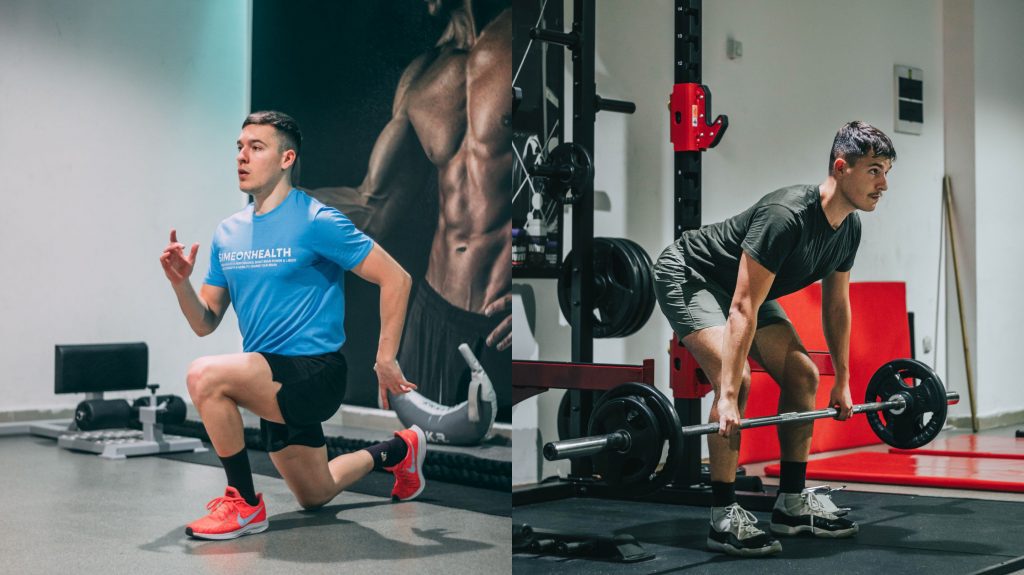
Which Method Is Better for Beginners?
Compound exercises are superior for healthy beginner lifters since it allows them to perform full-body movements and establish a foundation for later hypertrophy or strength methods.
It gives the best bang-for-your-buck return to investment in the gym, especially in amateur lifters because it activates more muscle mass and has a greater metabolic effect. It burns more calories and stimulates anabolic hormones more.
Last but not least, improving form in full-body movements is crucial for injury prevention later. Compound work improves mobility by pushing us in higher ranges of motion but is also great for learning stability and coactivation.
What’s the Main Use of Isolation Exercise?
Isolation work is mainly used to specifically target the muscle, which can cause higher muscle-tearing and inner metabolic effects without too much nervous system activation. This means we can pump the muscle without getting centrally fatigued, hence why often isolation is put at the end of the workout (once we’re tired).
For rehab in injured muscles, where we want to stimulate specific muscle activation or hypertrophy without putting too much stress on the joint, without needing coactivation and stabilization, and without producing much force, isolation is king.
Which One is Done First In a Training Session?
The golden rule suggests doing the compound exercise first. Your squats, deadlifts, bench press, and rows will require the most energy you’ll spend throughout your workout. It will ensure you get most of the muscles you aim at that day since it activates lots of accessory muscles.
In terms of nervous system activation, you’ll get centrally fatigued faster with compound work, hence why doing it first when you’re fresh in the gym is recommended.
That being said, in bodybuilders who’d like to change their routine and activate a key muscle first, isolation work first can be great. This allows them to really feel the targeted muscle later in the compound work.
However, for beginners, compound work should come first. This means doing your full-body multi-joint movements first before you think about pumping the muscle.
3 Exercise Examples
Here are three exercise examples for compound vs. isolation work.
Squat vs. Leg Extension
Bench Press vs. Triceps Cable Extension
Arnold Press vs Lateral Dumbbell Raise
The squat is a full-body, multi-joint functional exercise that targets the leg muscles. It involves large muscle mass, from quadriceps, hamstrings, gluteus, abductors, calves, and knee stabilizers.
On the other hand, the leg extension exercise puts more emphasis on the quadriceps and vastus medialis muscle. It is one joint movement that only changes the angle of the knee.
The bench press is the compound exercise, the king of upper body training. It activates many muscles, like the chest, triceps, and front deltoids. It activates many shoulder stabilizers and really takes a toll on your nervous system if you perform heavy lifts.
Triceps cable extension mainly targets the triceps muscle only, and the movement is done in one joint. The elbow goes through extension in the concentric part of the exercise, where we activate the triceps.
Arnold press is a multi-joint functional exercise, similar to the overhead press. This doesn’t just target the mid deltoid, but also the front deltoids, chest, and triceps help in the push motion overhead. It is a complex movement that requires shoulder stabilization.
The lateral dumbbell raise on the other hand mainly targets the mid-deltoid muscles. As opposed to the Arnold press where you can see angles changing in shoulder and elbow (extension) and wrists (rotation), the lateral dumbbell raises only involves arm abduction (lateral flexion) up to 90 degrees.
Effects on VO2max, Strength, and Body Composition
The effects of resistance training are very well known, it increases muscle mass and strength. However, it is logical that incorporating full-body exercises can burn more energy (calories) and increase oxygen consumption.
A study compared either compound or isolation exercise resistance training done for 8 weeks, 3x weekly. The group performing multi-joint exercises was superior in improving VO2max, and maximal strength on the bench press and knee extension. Both groups had positive effects on cardiorespiratory fitness, strength, and body composition. (fat-loss) (1)
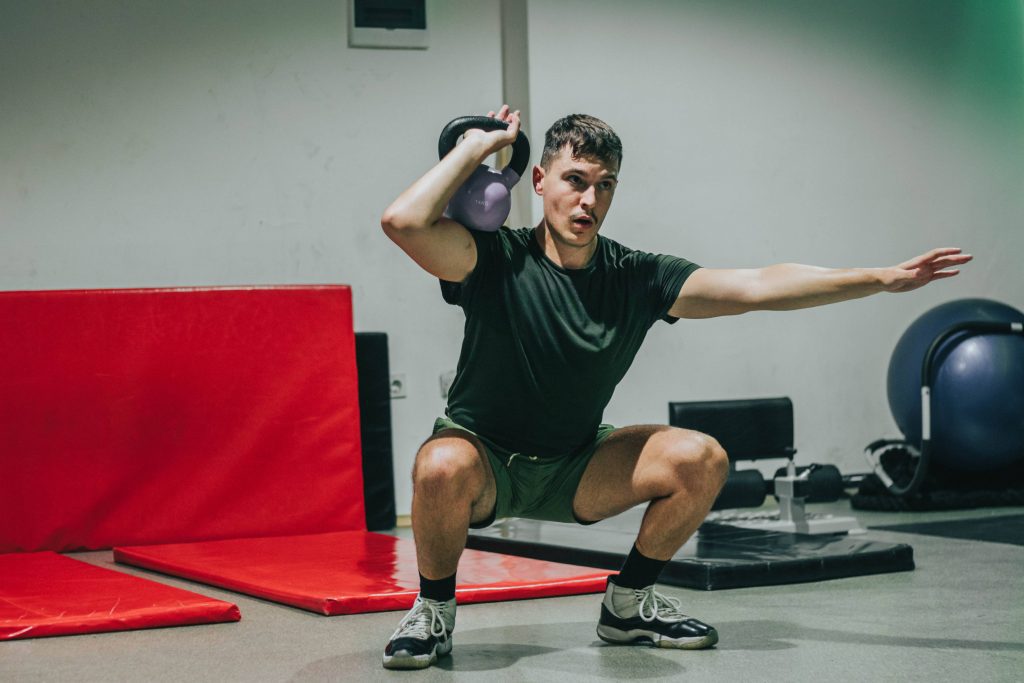
Pros of Compound Exercise
Compound exercises burn more calories
When doing compound lifts we tend to use more muscle, which means higher force output and more energy production. This requires our lungs to work more, which can contribute to cardiorespiratory fitness. Isolation on the other hand only incorporates the targeted muscle, so fewer calories are burned.
Comparing the energy cost of different resistance exercises showed that bicep curl (isolation) had the lowest, and half-squat (compound) exercise had the highest energy cost. (2)
Compounds are better at building strength
To become stronger means to be able to lift more load from A to B. In beginners, training for strength relies heavily on neurological adaptation. The ability to stimulate the larger muscle fibers and exert more force is crucial. For this reason, the type of training involves heavy lifts of 90-100% RM, longer recovery of 3-5 min, and less volume, 3-5 reps.
Full-body compound movements are superior at increasing strength, there is no dilemma about that. Why? Because they are most effective in stimulating maximal nervous system activation. Think of pushing your max. weight on the squat vs doing a biceps curl, what’s the weight difference?
Here’s what research has to say:
- 29 young men, untrained (in resistance) did either lat pulldowns or biceps curls. By the end of it, the peak torque and muscle thickness were improved, but neither was superior. Why? Maybe because the lat pulldown activates the back more than the elbow flexors (biceps) as much as the curl. (3)
- In 10 recreationally active people, who trained for 6 weeks, 2x daily, those who did multi-joint exercises had superior results in terms of gaining maximal strength. Tested on knee extension, leg press and knee flexion showed a higher 1RM increase. (4)
- 16 resistance-trained men performing either multi-joint or single-joint exercises showed similar strength improvements but higher total load lifted in the group performing multi-joint exercises. (5)
Compounds are better for mobility
The reason compound movements are more functional, is that they incorporate many skills and abilities that help us perform daily tasks and move with ease. Some of these include improved balance and stabilization, but also improved range of motion or mobility.
Flexibility is the length or ability of the muscle to lengthen. Mobility is different. It is a complex of muscles, joints, tendons, and ligaments working together to allow movement. Mobility requires the stretched muscles to be activated under tension, and sustain the movement while having complete stability.
Think of the squat. Of course, you need good hip mobility to perform a correct squat. However, in advanced lifters or CrossFit lifters, the movement of squatting is enough to maintain or even improve this mobility, without the need for a special program. Why? Because we move in higher ROM.
Isolation on the other hand can only shorten the muscle, especially if done in smaller amplitudes. For this, most people would benefit from full-body compound exercise or the addition of flexibility training.
Compound improves stability
For proper stability, we need the coactivation of antagonistic muscles. (6) We also need to incorporate other accessory muscles that correct left-to-right or front-to-back movements, to stay centered.
Compound moves are usually closed-kinetic chain moves that require us to stabilize. Think of the overhead press or bench press. You must activate a lot of muscles to stabilize the shoulders. Same with your hips, knees, and core in squats.
Research shows that:
- in 39 participants split into isolation, compound exercise, and control group, those who did complex exercises showed superior improvement in rotator-cuff strength. (7)
- In 16 subjects who performed different exercises, trunk muscle activation (measured with EMG) was far superior during the squat, in comparison to deadlift, side bridge, or superman. (8)
- In 28 healthy uninjured subjects, different squat positions showed different muscle activation. Nonetheless, the muscles involved included vastus medialis, vastus lateralis, biceps femoris, rectus femoris, gastrocnemius, and more. While the level of activation differed in different squat positioning, point is to see that many muscles are involved while performing the squat. (9)
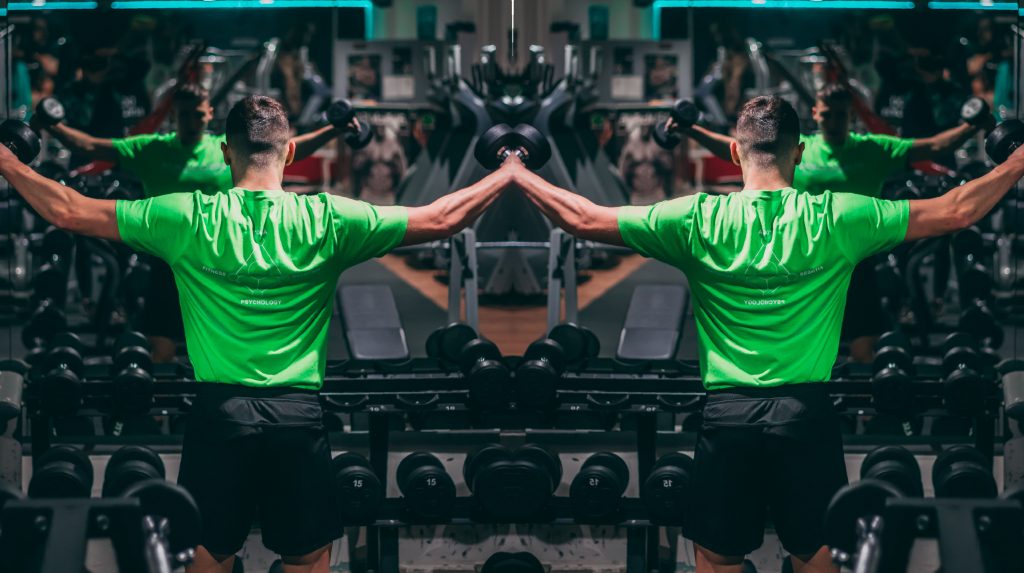
Pros of Isolation Exercises
Isolation for muscle tearing (targeting)
Isolation exercises are better at targeting a key muscle. During hypertrophy training, our goal is to tear the muscle down, to stimulate metabolic changes which will lead to adaptations like muscle growth. Theoretically, the more we can tear this muscle, the more lactic acid we can produce, and the more it will grow (with proper recovery & protein)
For beginners, hypertrophy training should mainly aim at compound movements to establish a solid foundation. However, in experienced bodybuilders, full-body lifts won’t be most effective at stimulating maximal muscle growth in specific areas. For example, the bench press won’t sculpt the lateral triceps head, so isolation work specifically for that muscle can be more effective.
Isolation for rehab after an injury
Isolation exercises are also very useful during rehab. If we’re injured, it is very likely that we’d want to save our joints for some time, but to prevent muscle atrophy we should work the muscle. Isolation exercises are great at working the muscle without high pressures on the joints, or high force output.
Isolation eccentric exercises are specifically interesting to initiate muscle recovery, growth, or positive morphological changes, adaptation is neural activity and improves blood circulation in the muscle. (10)
Isolation for correcting imbalances
For people with injuries, specific working or living biomechanical requirements, or poor posture, a lot of times muscle imbalances are the problem. For example, a weak back and shoulder on one side can cause neck pain, spinal curvatures, or other problems. If the problem is a weak deltoid muscle, it’s easier to fix that with an isolation exercise, although in the latter stages bilateral stabilization can help as well.
In nine male, right-handed fencing athletes the specific 12-week training program that was given to correct imbalances incorporated a lot of one-joint movements. Exercises like curl, dumbbell raise, dumbbell pronation, single-leg press or curl, back extension, dumbbell raise, and single calf raise were shown to help reduce mediolateral sway, and improve lower limb muscle strength, and balance. (11)
Conclusion
Compound training or multi-joint movements are superior for beginners, for strength, and mobility, and give the highest metabolic effect. Squats, deadlifts, rows, and overhead presses will stabilize and coactivate many muscles, burn more calories, and set a better foundation for strength.
Isolation exercises can be used for optimal hypertrophy in advanced lifters, especially since they can better target and tear a specific muscle. Isolation is also used to correct muscle imbalances and muscle hypertrophy after injury in the rehab phase, without putting much stress on the joints.


